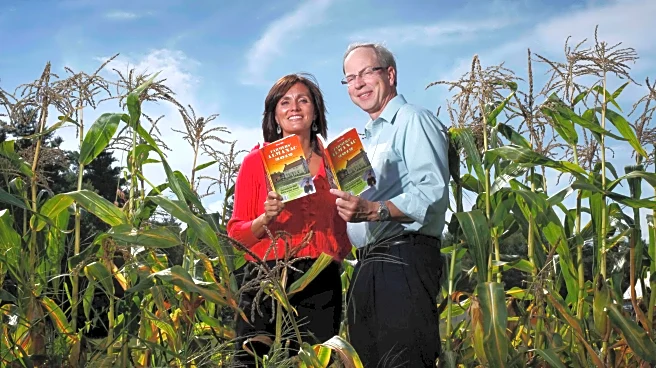What's Happening?
The Farmers' Almanac, a publication with a 208-year history, announced that its 2026 edition will be its last. The decision to cease publication is attributed to the financial difficulties of producing
and distributing the book in the current media landscape. The Maine-based almanac, which has been a staple for farmers, gardeners, and weather enthusiasts since 1818, is known for its long-range weather forecasts derived from a secret formula involving sunspots, planetary positions, and lunar cycles. In addition to weather predictions, the almanac offers gardening tips, trivia, jokes, and natural remedies. Despite its historical significance and a reported circulation of 2.1 million in North America in 2017, the publication has struggled to maintain its financial viability.
Why It's Important?
The closure of the Farmers' Almanac marks the end of a significant cultural and historical publication that has been part of American life for over two centuries. Its long-range weather forecasts and practical advice have been valuable resources for generations. The decision highlights the broader challenges faced by traditional print media in adapting to the digital age, where financial sustainability is increasingly difficult. The almanac's closure may impact its loyal readership, particularly those in rural and agricultural communities who have relied on its guidance. This development underscores the ongoing transformation in how information is consumed and the pressures on legacy media to innovate or face obsolescence.
What's Next?
With the cessation of the Farmers' Almanac, its readers may turn to alternative sources for weather forecasts and gardening advice. The Old Farmer's Almanac, a separate publication, has stated it will continue its operations, potentially absorbing some of the Farmers' Almanac's audience. The shift may also encourage digital platforms to fill the void left by the almanac, offering similar content online. The broader media industry may continue to see similar closures as print publications struggle to compete with digital media, prompting further consolidation and innovation in content delivery.













